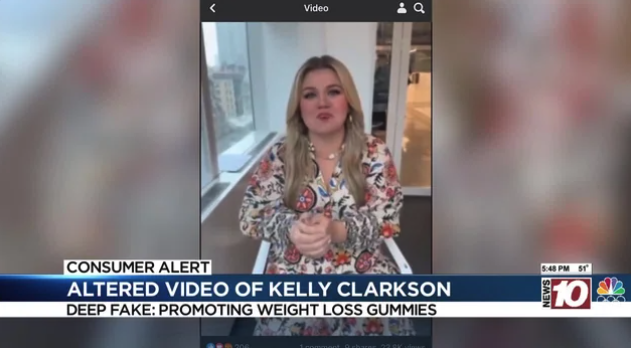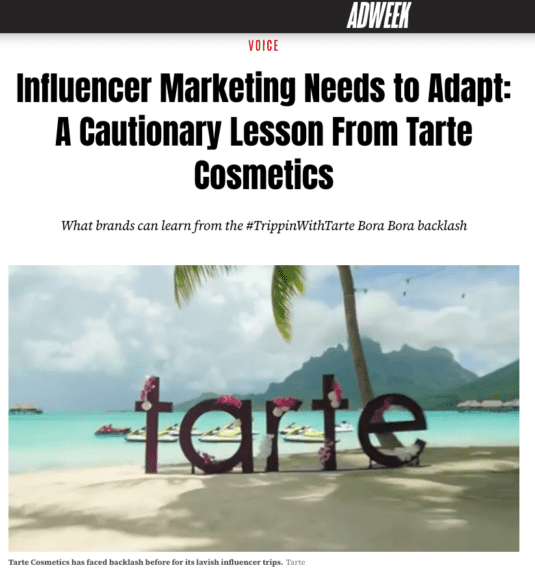
The world of marketing is constantly changing. Some new trends present opportunities, while others can be downright terrifying for businesses that aren’t prepared. From over-reliance on AI to data privacy issues and inauthentic influencers, these spooky trends could haunt your marketing efforts if you’re not careful.
Everything is scarier in the dark, so we’ll turn the lights on for you. We’re here to help you avoid the nightmares and keep your marketing efforts fresh and effective.
AI Overload and Fakeouts
Artificial Intelligence (AI) is transforming marketing. It can streamline tasks, personalize customer experiences, conduct research, generate content and even create look-alike celebrity endorsements. While most marketers use AI to some extent, there are some scary aspects of the technology. Deepfakes, for example, are rampant, aiming to take advantage of viewers or exploit them with misinformation. This past year, a deepfake of Kelly Clarkson promoted weight-loss keto gummies that she was not involved with nor ever endorsed. Although the legal landscape around AI-generated videos and voiceovers is still evolving, brands must navigate the ethics to avoid damaging their reputation and eroding consumer trust. Using AI-generated videos or voiceovers may seem like it saves time and money, but it may actually result in lawsuits as the landscape evolves.

The key to leveraging AI in marketing is balance. While AI can make processes more efficient or assist in content creation, over-reliance on it can lead to impersonal and robotic interactions with your audience and low-quality content. To make the most of AI, let it handle the research or mundane tasks and maintain authenticity by focusing on creating meaningful human-generated content that resonates with your audience.
Data Privacy and Creepy Over-Personalization
Consumers are increasingly worried about how their data is being used, with 68% concerned about online privacy. This heightened awareness, alongside stringent regulations like GDPR and CCPA, means that any misuse of customer data can lead to backlash, hefty fines and even lawsuits.
To avoid pitfalls, be transparent about how you collect, store and use data. On your website, give users control over the collection of identifying information by providing clear opt-in/opt-out preferences with a cookies consent tool. This information should also be included in your site’s privacy policy. When sending emails to your established audience or prospects, make sure it’s clear in the message that they can opt out of future communications, a requirement under the CAN-SPAM Act.
Personalization has become a cornerstone of effective marketing, but there’s personalized and then there’s invasive. Over-personalization, using too much data in ways that feel intrusive, makes customers uncomfortable and damages trust in your brand. A prime example is Target’s use of customer data to target baby product ads to a teenage girl who had not yet disclosed her pregnancy to anyone.
SPAM Bot Traffic May be Lurking
Spam bot website traffic can be a real fright for marketers. Malicious bots, software applications created to execute automated tasks on the internet, are impacting websites globally and becoming more sophisticated. They can imitate the behavior of a real user, generate misleading website traffic, skew data and harm user experience. Bots interfere with legitimate customer engagement and increase advertising costs by generating false clicks.
How do you vanquish lurking spam bots? Invest in advanced bot detection tools, adopt stronger CAPTCHA systems and regularly monitor traffic patterns to mitigate the risks associated with spam bots. Your website hosting company should be implementing best practices, like firewalls and spam protection. Stay proactive when it comes to cybersecurity and protect both financial data and data integrity in the digital space.
Inauthentic Influencers Can Haunt Your Brand
Influencer marketing has seen explosive growth, but some consumers are becoming skeptical or even fatigued. In fact, 45% of people between the ages of 13 and 22 say influencers don’t have the same power they used to. Additionally, 53% of this age group said they trust recommendations from everyday people online more than influencers with large followings. The wrong influencer could negatively impact your brand’s customer reputation.
The makeup company Tarte, for example, alienated many followers when it sent brand influencers on a luxe trip to Bora Bora. Many audience members found the campaign “tone deaf” at a time when younger generations feel shut out of social mobility. In a similar vein, some influencers have become downright dishonest. One influencer was found promoting a vegan lifestyle and offering a $99 detox program to help followers, when she, in fact, was not actually vegan.

How do you effectively use influencer marketing? Prioritize genuine partnerships with relatable influencers. Sometimes, this means micro-influencers are better. Above all, influencers should align with your brand’s values and message. Seek out partners who have a strong connection with their audience and are genuinely passionate about your product or service. Sponsored content should always be labeled for transparency.
Navigating today’s scary marketing trends isn’t easy. If you need help, reach out to Brian Bennett at bbennett@stirstuff.com.


